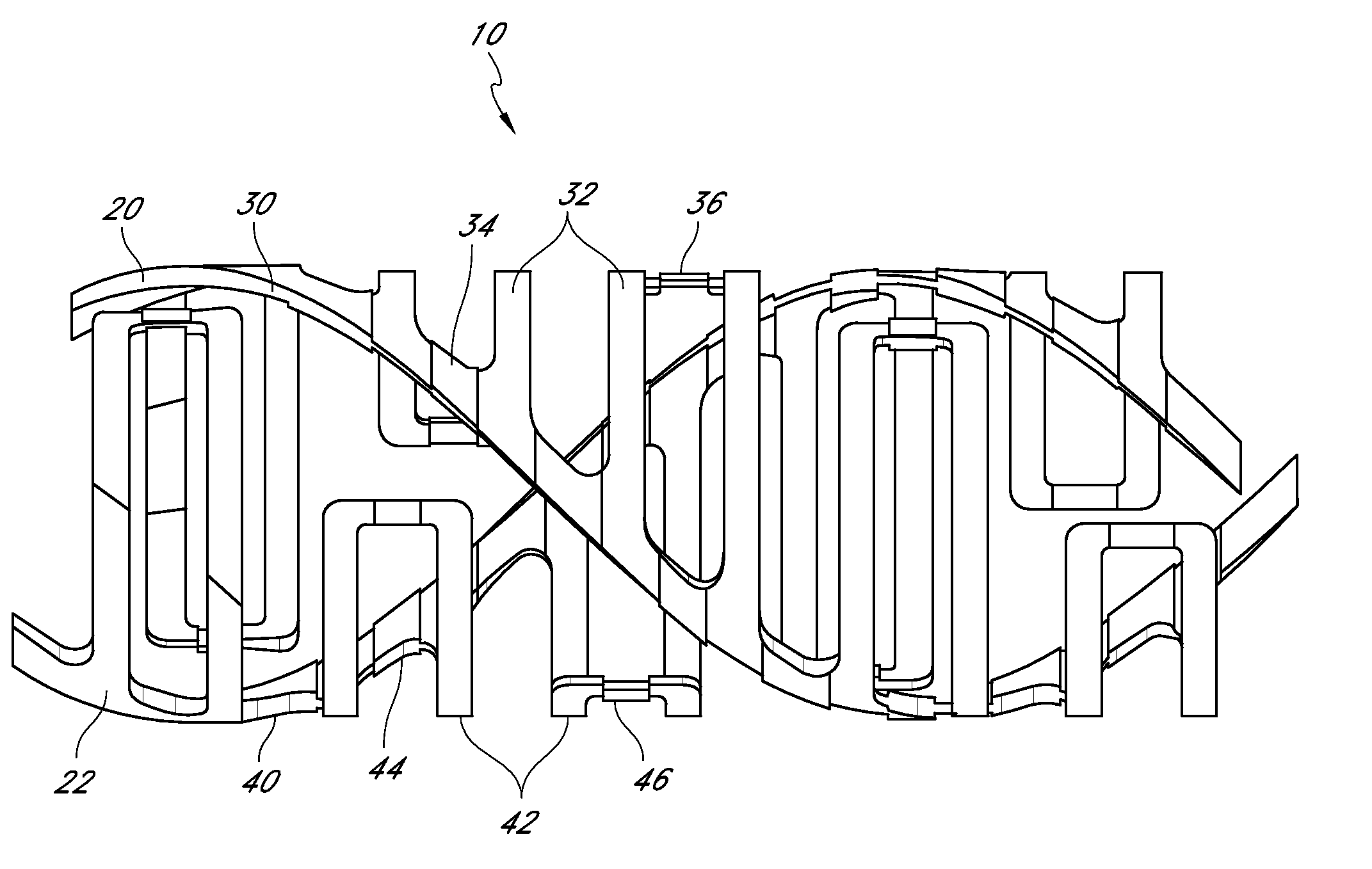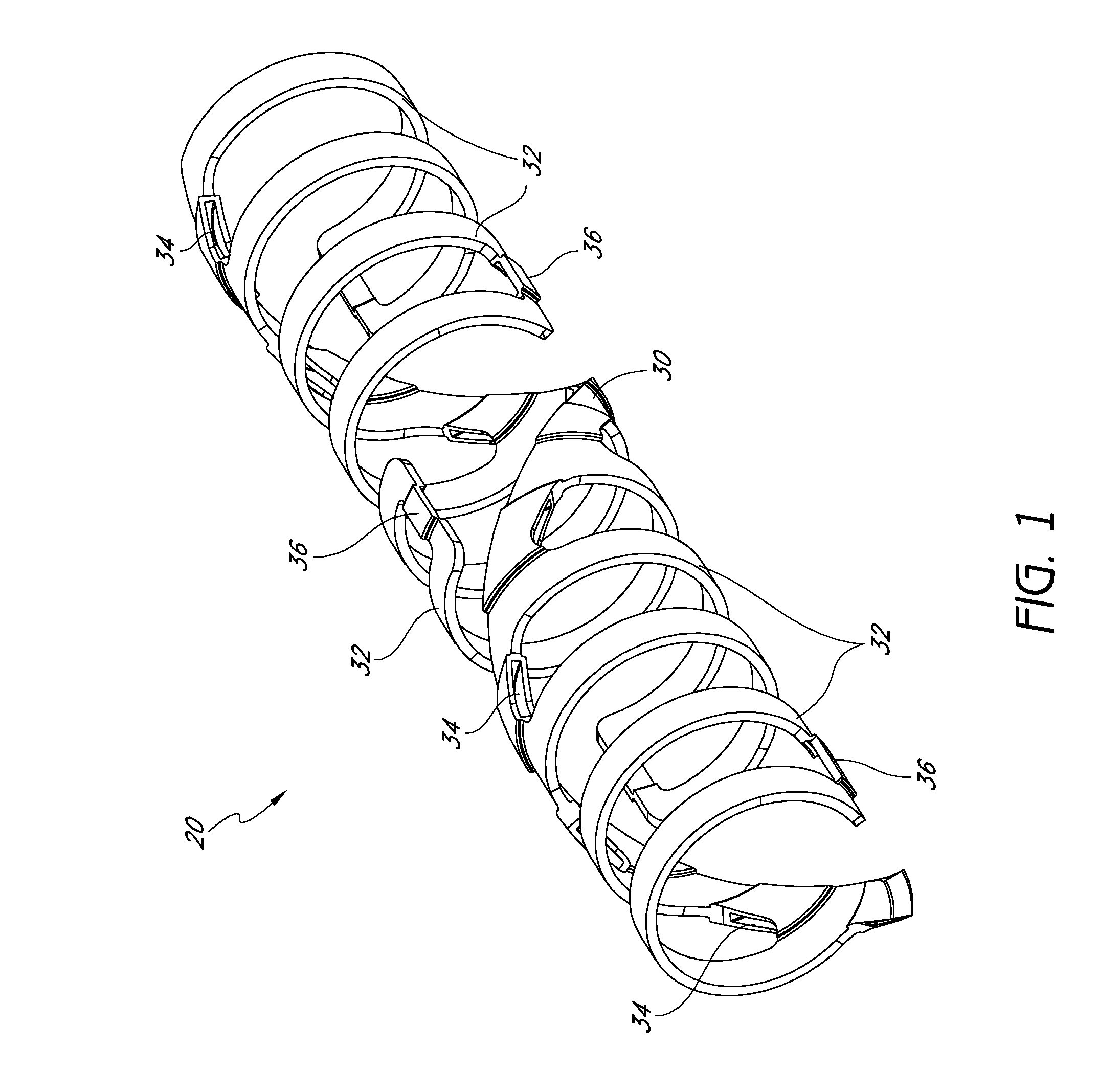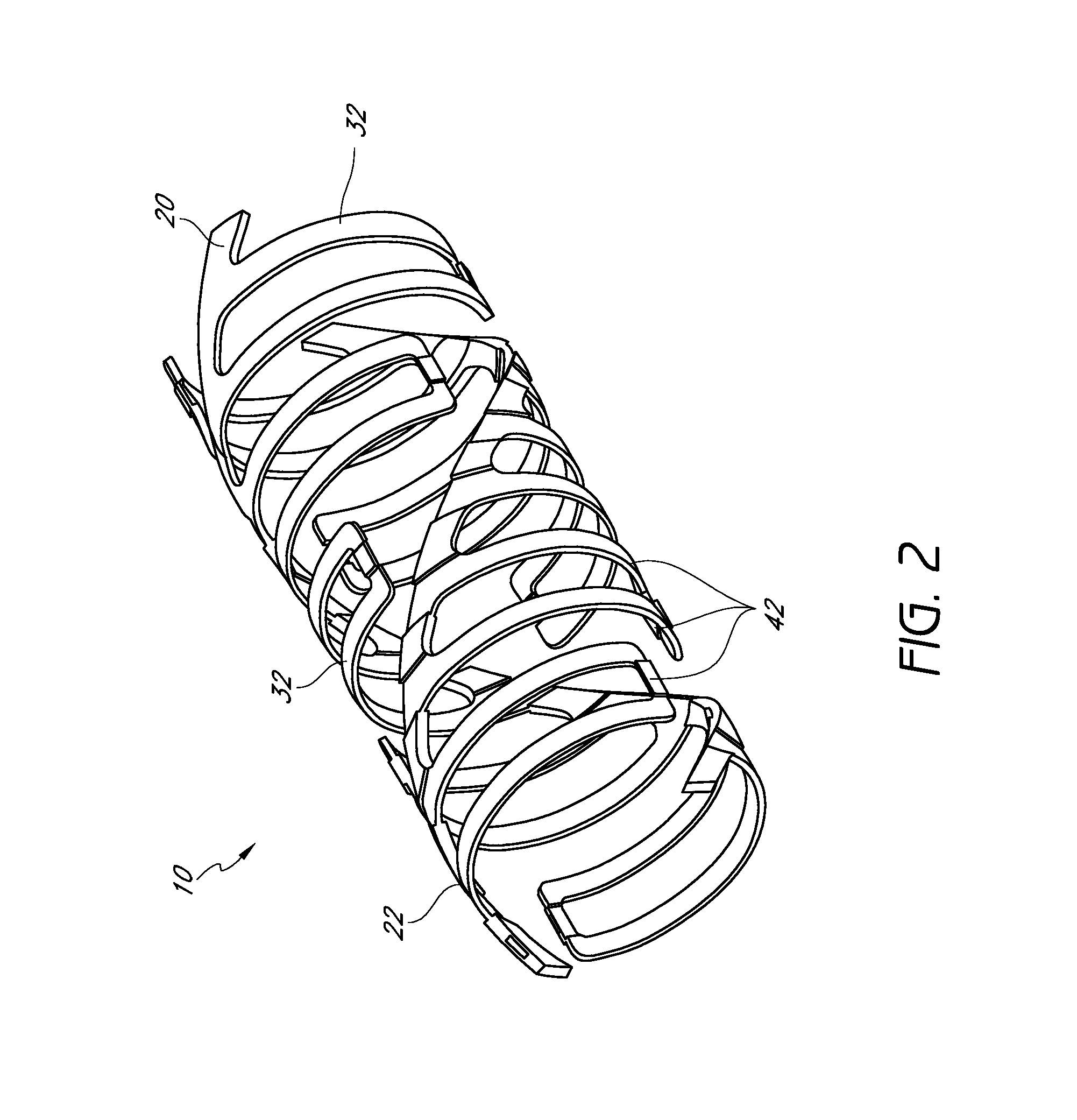Expandable slide and lock stent
a technology of stents and slides, applied in the field of expandable medical implants, can solve the problems of mechanical and vasodynamic limitations of stents, limitations related to deployment, limitations related to vasodynamic capabilities, etc., and achieve the effect of increasing the potential for slipping and denting
- Summary
- Abstract
- Description
- Claims
- Application Information
AI Technical Summary
Benefits of technology
Problems solved by technology
Method used
Image
Examples
examples
[0156]FIGS. 1-8 show conceptual views of embodiments of an expandable vascular device, prosthesis or stent in assembled and exploded orientations. The stent can be operative to move via translation and / or slide and lock movement. FIGS. 1-8 are intended to be conceptual in nature. Thus, the embodiments shown in FIGS. 1-8, as well as other embodiments of the stents disclosed herein, can incorporate structural elements, structural members, slide and lock mechanisms and other features that are discussed in further detail below with reference to further drawings as described in further detail herein.
[0157]Referring to FIGS. 1-5, a stent 10 is provided that can have a tubular form. These figures illustrate that the stent 10 can have a wall comprising a plurality of generally helically arranged linked radial elements or modules 20, 22. The stent 10 can have a through lumen which, along with the stent itself, can be expandable from a first diameter (Dlumen-collapsed or Dinner-collapsed) to ...
PUM
 Login to View More
Login to View More Abstract
Description
Claims
Application Information
 Login to View More
Login to View More - R&D
- Intellectual Property
- Life Sciences
- Materials
- Tech Scout
- Unparalleled Data Quality
- Higher Quality Content
- 60% Fewer Hallucinations
Browse by: Latest US Patents, China's latest patents, Technical Efficacy Thesaurus, Application Domain, Technology Topic, Popular Technical Reports.
© 2025 PatSnap. All rights reserved.Legal|Privacy policy|Modern Slavery Act Transparency Statement|Sitemap|About US| Contact US: help@patsnap.com



